
10 Contemporary Garden Edging Ideas for a Modern Outdoor Look
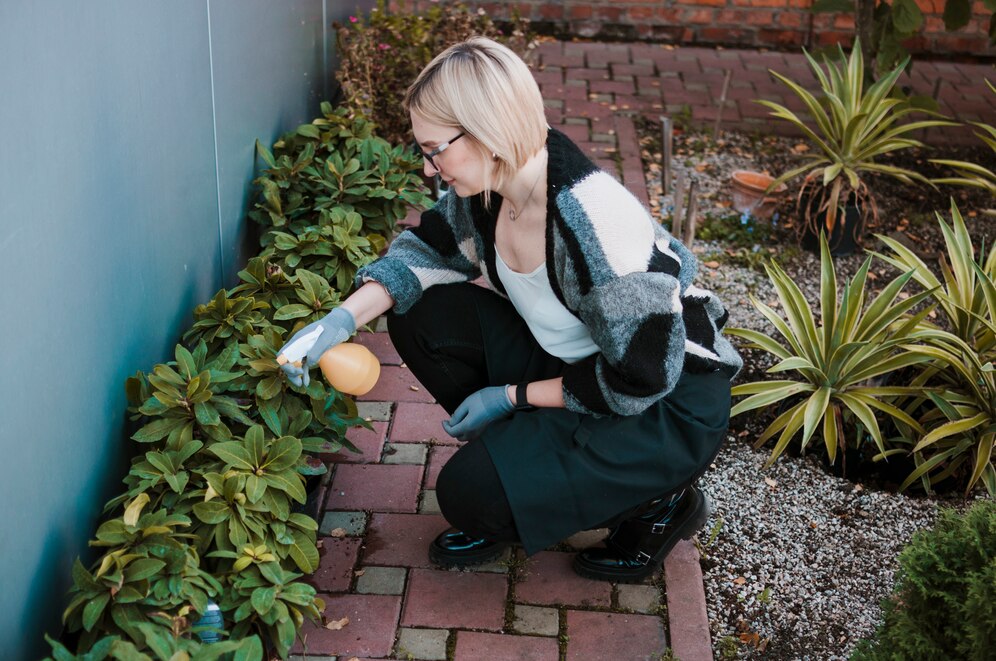
A neat garden edge makes a big difference. It brings order to your outdoor space. It also adds style and highlights your plants. A sharp edge helps define flower beds, paths, and lawns without much effort.
Modern gardens often use clean lines and simple shapes. This style works well with metal, stone, wood, or even concrete. With the right edging, your garden can look fresh and up to date.
You don’t need a big budget or fancy tools. Many ideas use basic materials that you can find nearby. Some ideas work well for small yards. Others fit larger spaces. Each one adds beauty and structure.
This guide shares 10 easy and stylish garden edging ideas. Each one suits a modern home. Pick the one that fits your style and space. Let your garden stand out with smart and simple borders. Clean lines. Fresh look. Easy results.
10 Contemporary Garden Edging Ideas for a Clean and Modern Look
A garden feels more complete with clean edges. Sharp lines or soft curves help divide spaces. They keep grass from spilling into flower beds. They add style, shape, and order to the yard.
Modern edging does more than just create borders. It highlights plants. It draws the eye. It makes a space feel fresh and well-designed. From steel lines to wooden borders, materials make a big difference.
Here are ten contemporary garden edging ideas. These fit well with modern homes. They also work in small gardens or large outdoor spaces.
1. Metal Strip Edging
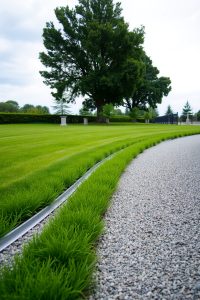
Metal strips give a garden a sleek, clean edge. Use steel or aluminum. They last long and bend into smooth curves or straight lines. Rusted steel adds a bold, modern feel.
Install them between lawn and gravel or mulch. Keep them level with the ground for a hidden look.
Why it works: Strong lines, low profile, and easy to shape.
2. Concrete Curb Edging
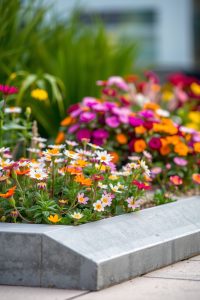
Concrete curbs look simple and sharp. Pour them into straight or curved molds. Paint or stain for a custom finish. These borders work well around walkways, driveways, and beds.
Concrete stays in place and resists weather. It gives gardens a permanent, sturdy line.
Why it works: Durable and fits modern landscapes.
3. Wood Plank Borders
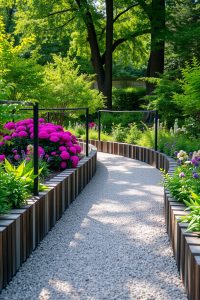
Use smooth timber for a natural and neat look. Place planks flat for a low border or upright for a raised edge. Paint the wood black, white, or dark brown for a modern vibe.
Pressure-treated or hardwood options last longer. Add gravel paths next to the wooden line for contrast.
Why it works: Natural but clean, simple to build.
4. Gravel and Steel Mix
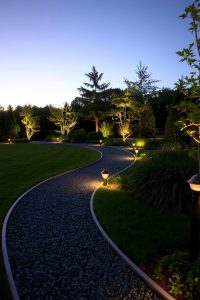
Mix gravel paths with steel edging for texture and contrast. Use fine gravel for a smooth look. Line the edges with metal strips to keep rocks in place.
Add lights along the path for a cozy evening vibe. Use gray or white gravel for a clean effect.
Why it works: Clean lines plus soft textures. Great for walkways.
5. Raised Brick Borders
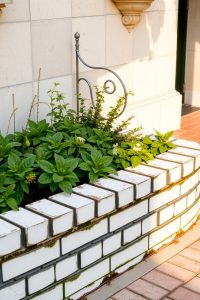
Bricks give structure and color to a garden. Lay them on their side, stacked two or three rows high. Keep the lines tight and straight.
Paint bricks white or dark gray for a more modern feel. Use them around flower beds or along pathways.
Why it works: Strong and stylish. Easy to shape into curves or lines.
6. Gabion Wall Edging
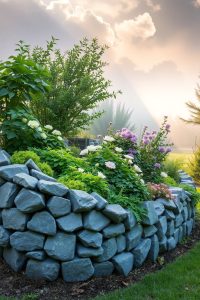
Gabion walls use metal cages filled with rocks. They give a bold, industrial look. Build them low to edge flower beds or walkways.
Use stones in similar shades for a clean look. Mix small and large rocks to fill gaps.
Why it works: Strong, modern, and full of texture.
7. Paver Stone Borders
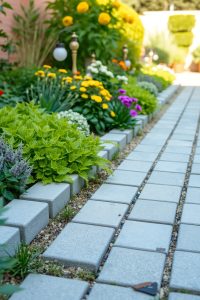
Pavers make great borders. Lay them flat or stand them up. Choose square or rectangular shapes. Keep spacing tight for a solid line.
Use gray or black pavers to match a modern design. Place them next to grass, mulch, or gravel.
Why it works: Versatile and neat. Matches many garden styles.
8. Tile or Mosaic Edging
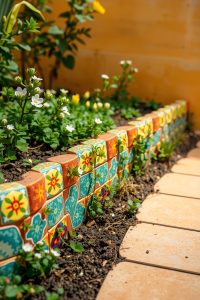
Tiles bring color and pattern into garden spaces. Use outdoor tiles that resist water. Lay them in a row for edging or mount them on low walls.
Pick simple shapes or bold designs. Great for adding a fun twist to modern gardens.
Why it works: Unique and stylish. Adds color to plain areas.
9. Black Rubber Edging
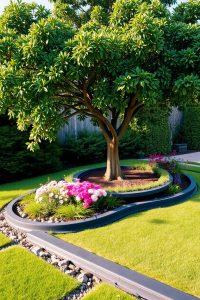
Rubber edging bends easily into any shape. It stays low and neat. Black rubber matches many garden looks.
Use it for flower beds, tree circles, or along walkways. It’s soft but tough.
Why it works: Flexible, simple, and modern.
10. Living Plant Edging
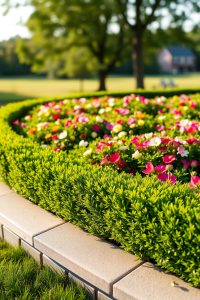
Use low hedges or ground cover to create natural edges. Boxwood or lavender makes tidy lines. Try thyme or sedum for soft, green borders.
Trim plants often to keep the shape. These borders look fresh and blend into the garden.
Why it works: Adds life and color. Always changing.
FAQs
What is the best material for modern garden edging?
Metal and concrete offer the cleanest lines. They last long and fit many styles.
How can I make garden edging look neat?
Keep lines straight or curves smooth. Trim grass, clean borders, and match colors.
Does garden edging help with maintenance?
Yes. Edging keeps grass from spreading and holds mulch in place.
Can I install edging by myself?
Most ideas on this list are easy for one person to do. Use basic tools and plan the shape before starting.
How deep should edging go?
Most borders need 4 to 6 inches of depth to stay firm and hold shape.
Conclusion
Contemporary garden edging turns a simple yard into a clean and stylish space. It helps define beds, walkways, and patios. It keeps gardens tidy and easy to care for.
Pick the material that fits your space and your style. Try metal for bold lines. Try wood for a warm feel. Try plants for a natural border.
Good edging guides the eye. It sets boundaries without blocking views. It makes each part of the garden stand out.
With a little effort, any garden can feel modern, fresh, and full of life.
